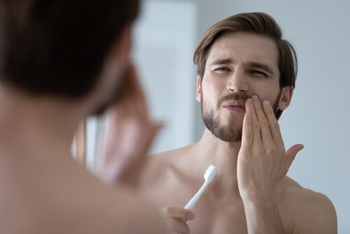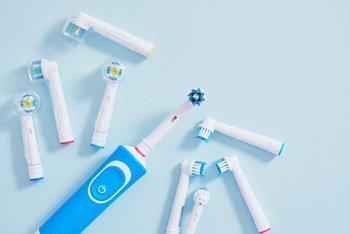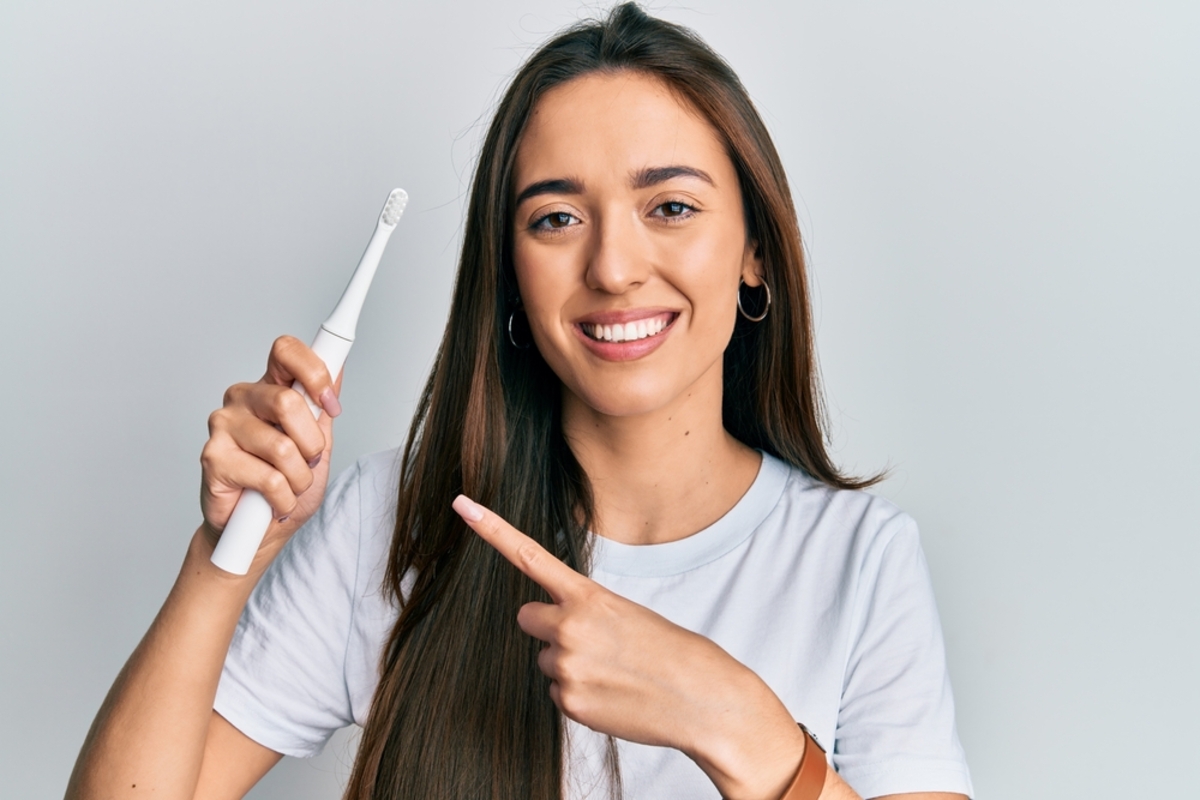In today’s fast-paced world, convenience reigns supreme, extending to our oral hygiene routines. Electric toothbrushes are rising in demand due to their ease of use and potential for a deeper clean. However, with a device designed for use around water, a crucial question arises: Are electric toothbrushes waterproof?
This article explores the world of electric toothbrushes, exploring their water resistance capabilities, helping you choose the right brush for your needs, and providing tips for optimal brushing techniques.
Let’s get started!
Demystifying Water Resistance: A Balancing Act
While the term “waterproof” might conjure images of a device completely impervious to water damage, the reality for electric toothbrushes is a bit more nuanced.
Most electric toothbrushes are actually water-resistant, meaning they can withstand splashes and direct water contact to a certain degree.
This allows for convenient rinsing under the tap and makes them safe to use in the shower for some models.
There’s a reason for this distinction.
A completely sealed toothbrush might trap moisture inside, creating a breeding ground for bacteria. Manufacturers carefully design their brushes to be water-resistant while allowing proper ventilation.
Understanding The Code: The Ingress Protection (IP) Rating
So, how do you know just how water-resistant your electric toothbrush is?
Look for the Ingress Protection (IP) rating displayed on the packaging or user manual. This two-digit code indicates the level of protection against dust and water.

The first digit signifies protection against solid objects (dust), while the second digit represents water resistance.
Here’s a breakdown of some common IP ratings for electric toothbrushes:
- IPX4: This is a common rating, indicating the brush can withstand splashes from any direction.
- IPX5: This type offers protection against water jets from various angles.
- IPX7: The brush can be submerged in shallow water for a short period.
- IPX8: This is the highest rating, signifying the brush can withstand long periods underwater.
It’s important to note that these ratings are guidelines, and even an IPX7-rated brush shouldn’t be intentionally submerged for extended periods.
Choosing The Right Electric Toothbrush For You
With various electric toothbrushes on the market, selecting the right one for your needs goes beyond just water resistance.
Here are some factors to consider:
- Brushing Modes: Many brushes offer multiple brushing modes, such as sensitive, whitening, or polish. Choose a mode that suits your specific oral care needs.
- Brush Head Options: Consider the type of brush head you prefer. Some have rotating heads, while others vibrate. Look for options with replaceable heads for optimal cleaning.
- Battery Life: Think about how often you’ll charge your brush, and choose one with a long-lasting battery.
- Comfort And Grip: Ensure the brush provides comfort to your hand and has a non-slip grip for safe handling, especially if you plan to use it in the shower.
Once you’ve narrowed down your options, check the IP rating to determine the water resistance level that best suits your habits.
Brushing Your Teeth With An Electric Toothbrush: Technique Matters
Now that you have the perfect electric toothbrush, let’s discuss the technique!
Here’s a step-by-step guide to ensure a thorough clean:
- Wet your brush head and apply toothpaste.
- Divide your mouth into four sections (two upper and two lower quadrants).
- Gently guide the brush head at a slight angle against your gum line.
- Use a slow, circular motion to clean each section for about 30 seconds gently.
- Don’t scrub harshly, as this can irritate your gums.
- Clean the chewing surfaces of your teeth using a back-and-forth motion.
- Don’t forget to brush your tongue to remove bacteria and freshen your breath.
- Rinse your brush head thoroughly and store it upright in a well-ventilated area.
Remember, consistent brushing is key to optimal oral health. Aim for twice-daily brushing for two minutes each time, and floss daily.
Frequently Asked Questions
Can I use my electric toothbrush in the shower?
It depends on your brush’s IP rating. Brushes with an IPX5 rating or higher are generally safe to use in the shower. However, it’s always best to consult the manufacturer’s instructions for specific recommendations.
Is it okay to submerge my electric toothbrush for cleaning?
Even for brushes with high IP ratings (IPX7 or IPX8), submerging them for extended periods is generally not recommended. While they can withstand brief accidental submersion, regular dunking can compromise the internal seals and shorten the lifespan of your brush. Focus on rinsing the brush head under running water and wiping down the handle with a damp cloth for routine cleaning.
How often should I replace my electric toothbrush head?
Most dentists recommend replacing your electric toothbrush head every three months or sooner if the bristles become frayed or worn. Worn bristles are ineffective at removing plaque and bacteria.
What should I do if my electric toothbrush gets wet accidentally?
Simply dry the brush head thoroughly with a clean towel and let the handle air dry completely before using it again. It’s also a good idea to consult the user manual for any specific drying instructions related to your model.
Are there any safety concerns with using an electric toothbrush?
Electric toothbrushes are generally safe for most people. However, if you have any pacemakers or other implanted medical devices, it’s important to consult with your dentist before using one. They can advise you on the best course of action for your specific situation.
Elevating Your Dental Health With Your Electric Toothbrush

Electric toothbrushes provide a convenient and effective way to maintain good oral hygiene. By understanding water resistance levels, choosing the right brush for your needs, and practising proper brushing techniques, you can maximise the benefits of your electric toothbrush and achieve a sparkling smile. Remember, consistency is key!
Brushing twice daily for two minutes each time, combined with flossing, forms the foundation of a healthy oral care routine.
So, ditch the manual brush and embrace the future of cleaning with an electric toothbrush! Just remember to keep it dry (or at least within its water resistance limits) for a long and healthy partnership.
Contact Infinity Dental Care, Winston Hills NSW 2153, at (02) 9159 6237 to ensure a brilliant smile as easily as possible!
Sources:
Cdipc, Amanda Hill Bsdh, RDH,. “Which Electric Toothbrush Is Best for Patients?” RDH Magazine, 10 Mar. 2023, www.rdhmag.com/patient-care/home-care/article/14288751/which-electric-toothbrush-is-best.
“Find Out How Water-Resistant Your Devices Are.” NBC News, 14 Aug. 2023, www.nbcnews.com/select/shopping/what-are-ip-ratings-rcna99835.
Gallagher, Patrick. “How to Brush With an Electric Toothbrush.” Which?, 9 Jan. 2024, www.which.co.uk/reviews/electric-toothbrushes/article/how-to-brush-with-an-electric-toothbrush-aErdG2X9AuRB.Love, Jon. “Can Electric Toothbrushes Get Wet? – Electric Teeth.” Electric Teeth, 10 Feb. 2024, www.electricteeth.com/can-electric-toothbrushes-get-wet.

